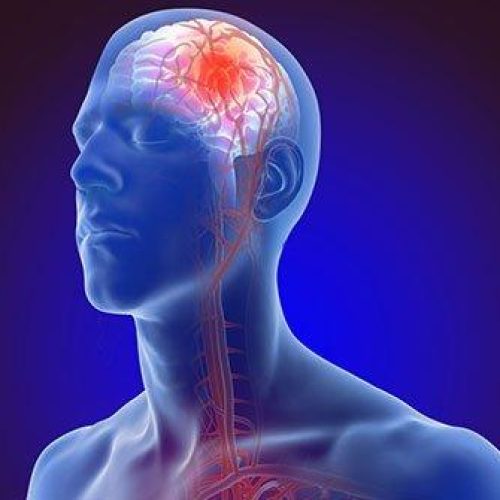Stroke



Stroke
When the blood supply to a region of your brain is blocked or diminished, brain tissue is deprived of oxygen and nutrients, resulting in a stroke. Within minutes, brain cells begin to die. A stroke is a medical emergency that requires immediate attention. Brain injury and other consequences can be avoided if intervention is taken early. A sudden blockage of arteries going to the brain causes the majority of strokes (ischemic stroke). When a blood artery bursts in the brain, it causes bleeding into the tissue (hemorrhagic stroke). Stroke is often known as a brain attack since it occurs quickly and need fast treatment. A transient ischemic attack (TIA) or mini-stroke occurs when the symptoms of a stroke last only a few minutes (less than an hour).



Why Choose Us?
Dr. Ashank Bansal is a certified and experienced specialist in endovascular treatment for stroke. He treated more than 1000 cases which range from regular to complex and some difficult ones. He conforms to the most current universal recommendations in order to provide his patients with more extensive care options. Wish is his mantra, and he is still working hard to provide patients with what they need.
FAQ's
The effects of a stroke are determined by which section of the brain is affected and how serious the injury is. Because different areas and activities of the brain are controlled by different regions of the brain, the area immediately surrounding the stroke is frequently impacted.
- Strokes can result in
- Sudden weakness in limbs,,
- Sensitivity loss
- Speaking, seeing, or walking difficulties.
People who have had a stroke may experience a headache, however stroke can also be completely painless. It is critical to recognise the warning signs of a stroke and to seek medical help as soon as possible if they occur.
Lifestyle risk factors
- Physical inactivity
- Being overweight or obese
- Use of illegal drugs such as cocaine and methamphetamine
- Heavy or binge drinking
Medical danger signs
- Blood pressure that is too high
- Secondhand smoke exposure or cigarette smoking
- Cholesterol levels are high.
- Diabetes
- Obstructive sleep apnea
- Heart failure, heart defects, heart infection, or an irregular heart rhythm, such as atrial fibrillation, are all examples of cardiovascular illness.
- Stroke, heart attack, or transient ischemic attack in the family or personal history
- Diet and exercise are two lifestyle changes that can be made.
- Blood thinners (antiplatelet drugs), drugs to reduce blood pressure, blood sugar, and lipids are some of the medical options.
- Intravenous thrombolysis for up to 4.5 hours in the case of a large veesel blockage.
- Endovascular stroke treatment can last up to 6 hours in the case of a large artery obstruction and up to 24 hours in other circumstances.
- The non-surgical treatment for the sudden loss of brain function caused by blood clots is endovascular stroke treatment. Microcatheters (thin tubes visible under X-rays) are introduced into the blood clot in the groyne or arm for treatment. A thrombectomy is a technique that involves removing a blood clot from a blood artery. If the blood clot cannot be removed, it is dissolved with medications administered through the catheter in a thrombolysis operation.
Under X-ray guidance, the interventional radiologist will insert a catheter into an artery in your arm or groyne and guide it towards the blood clot. A thrombectomy is an operation that removes a blood clot. The blood clot can be removed by encasing it in a stent and pulling it out with it, or by the interventional radiologist sucking it out through the catheter.
If the clot cannot be removed, a drug may be used to liquefy it through the catheter. A balloon catheter can be used to restore the original size of a blood artery if it is too narrow. This operation is known as angioplasty. A stent is then implanted to keep the blood vessel open.
